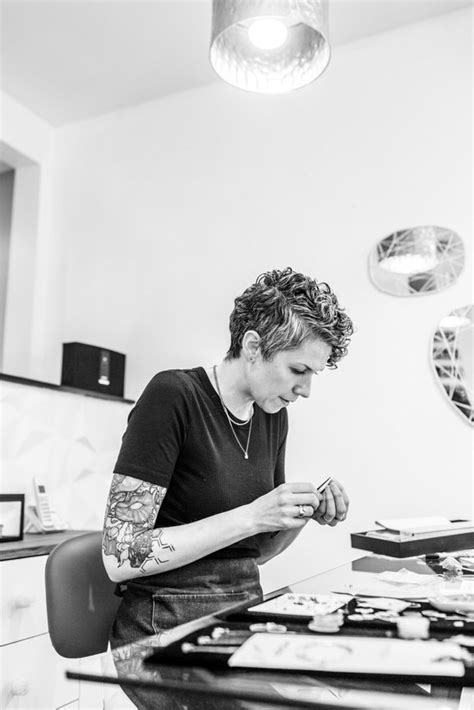Are you passionate about storytelling through photography? Do you have a keen interest in documenting real life and sharing untold stories with the world? If so, documentary photography may be the perfect avenue for you to explore. In this blog post, we will delve into the world of documentary photography and the essential elements that make a successful documentary photographer. From understanding the history of this unique genre to building trust with your subjects, we will cover everything you need to know to embark on your journey as a documentary photographer. Whether you are just getting started or looking to refine your skills, this comprehensive guide will equip you with the knowledge and inspiration to take your photography beyond the lens. Join us as we explore the captivating world of documentary photography and discover how you can make a meaningful impact through your visual storytelling.
Table of Contents
Getting Started: Choosing the Right Equipment
When embarking on your journey into the world of photography, one of the first decisions you’ll need to make is choosing the right equipment. Whether you’re interested in documentary photography, landscape photography, or street photography, having the proper tools can make all the difference in capturing stunning images.
It’s important to consider the type of photography you plan to pursue when selecting your equipment. For example, if you’re drawn to landscape photography, investing in a high-quality wide-angle lens and a sturdy tripod will be essential for capturing sweeping vistas and stunning scenery.
Research is your best friend when it comes to choosing the right equipment. Take the time to read reviews, watch video demonstrations, and talk to other photographers about their gear. This will help you make informed decisions and avoid purchasing items that won’t meet your specific needs.
Additionally, don’t underestimate the value of hands-on experience. Visit camera stores, attend photography expos, and participate in workshops to test out different cameras, lenses, and accessories. This will allow you to get a feel for the equipment and determine what feels most comfortable and intuitive for you.
Developing a Unique Vision: Finding Your Story
As a documentary photographer, one of the most important aspects of your work is developing a unique vision and finding your story. This process involves honing in on your personal perspective and identifying the narrative you want to convey through your images. It’s about creating a body of work that is both authentic and compelling, reflecting your individual voice as a photographer.
Developing a unique vision starts with understanding the subjects you want to capture and the stories you want to tell. Take the time to immerse yourself in the environment, observe the people, and listen to their stories. This deep level of engagement will allow you to identify the unique aspects of a community or individual that can become the focal point of your documentary photography.
Furthermore, finding your story requires a keen eye for detail and an understanding of visual storytelling. It’s about capturing those decisive moments that convey emotion, context, and meaning. Look for the subtle nuances and happenings that may not be immediately obvious, but are essential to the overall narrative.
Ultimately, developing a unique vision and finding your story is an ongoing process that requires continuous exploration and self-discovery. It’s about staying true to your own perspective and using your photography as a means of expression and communication. By delving deep into the world around you and capturing its essence through your lens, you can create a body of work that is not only visually striking but also deeply meaningful.
Understanding Documentary Photography: A Brief History
Documentary photography has a long and rich history, dating back to the early days of photography. It has been used to capture and record important historical events, social issues, and daily life. The aim of documentary photography has always been to tell a story, raise awareness, and provoke thought through imagery.
One of the earliest examples of documentary photography is the work of Jacob Riis, who used his camera to expose the harsh living conditions of immigrants in New York City in the late 19th century. His photographs were instrumental in bringing about social and political change, highlighting the power of visual storytelling.
As the medium evolved, photographers like Dorothea Lange and Walker Evans continued to use documentary photography to shed light on economic hardship and social injustice during the Great Depression. Their iconic images remain powerful and poignant reminders of the struggles faced by Americans during that time.
Throughout history, documentary photography has played a crucial role in capturing the human experience and preserving important events for future generations. By understanding its origins and evolution, photographers can gain a deeper appreciation for the impact of their work and the responsibility that comes with documenting real-life stories.
Conducting Research: Preparing for Your Project
When starting a new photography project, it’s important to take the time to conduct thorough research. This step is essential in ensuring that you have a clear understanding of the subject matter and can effectively communicate your vision through your photos.
Before diving into a project, it’s crucial to identify the specific goals and objectives you hope to achieve. Whether you’re capturing the lives of a particular community or documenting a social issue, having a clear purpose will help guide your research efforts and ensure that your photos are impactful.
Conducting research also involves exploring the work of other photographers who have tackled similar subjects. By studying their approach, techniques, and the impact of their work, you can gain valuable insights that can inform and inspire your own project.
Furthermore, gathering background information, statistics, and personal stories related to your chosen subject can provide context and depth to your photography. Taking the time to immerse yourself in the topic will not only make you a more informed photographer but also help you connect with your subjects and effectively communicate their stories.
Building Trust: Developing Relationships with Subjects
Building trust and developing strong relationships with subjects is crucial in documentary photography. The photographer must gain the trust of the people they are photographing in order to truly capture their essence and tell their story authentically.
One way to develop trust with subjects is by spending time getting to know them before ever picking up the camera. Taking the time to listen to their stories, understand their experiences, and show genuine interest in who they are as individuals can go a long way in building a foundation of trust.
In addition to spending time with subjects, it’s important for the photographer to clearly communicate their intentions and discuss the purpose of the project. Transparency and honesty are key components in establishing trust, and subjects should feel empowered to ask questions and provide input throughout the process.
Finally, it’s essential for the photographer to follow through on any promises made to their subjects. Whether it’s sharing the final project with them, providing them with prints, or advocating for their cause, demonstrating a commitment to the subjects’ well-being and the integrity of their story is vital in maintaining trust.
Composition and Framing: Capturing the Essence
Composition and framing are essential elements of photography that can greatly impact the overall look and feel of your images. The way you arrange the elements within your frame and how you choose to frame your subjects can make a huge difference in the final outcome of your photographs.
When it comes to composition, consider the rule of thirds and leading lines to create a more visually appealing and balanced image. The rule of thirds involves dividing your frame into nine equal parts using two horizontal and two vertical lines, and then placing the most important elements of your image along these lines or at their intersections. Leading lines, on the other hand, are used to draw the viewer’s eye into the image and towards the main subject.
Framing, on the other hand, involves using elements within your scene to create a frame around your subject. This can be anything from natural elements like trees or doorways, to man-made structures such as arches or windows. By framing your subject, you can add depth and context to your image, and guide the viewer’s eye towards what you want them to see.
Ultimately, composition and framing are tools that can help you capture the essence of your subject and tell a compelling visual story. Experiment with different techniques and don’t be afraid to think outside the box to create unique and impactful images.
Ethical Considerations: Balancing Authenticity and Respect
When it comes to documentary photography, one of the most important considerations is maintaining authenticity while also showing respect to your subjects. It is crucial to find a balance between capturing the true essence of a situation and honoring the dignity and privacy of the people involved.
One ethical consideration is the issue of informed consent. As a documentary photographer, it is essential to obtain permission from your subjects before capturing and sharing their images. This shows respect for their autonomy and allows them to have a say in how they are represented in your work.
Another important aspect of ethical documentary photography is to be mindful of the impact your images may have on the subjects and their communities. While it is important to tell important stories, it is equally vital to minimize potential harm that may come from the publication of your work.
Documentary photographers should also consider the broader cultural and societal implications of their work. It is essential to be aware of how your images may perpetuate stereotypes or misrepresent the realities of the communities you are documenting. By maintaining a critical awareness of the potential impact of your work, you can strive to create images that are both authentic and respectful.
Editing Your Work: Crafting a Compelling Narrative
Editing your work is an essential part of the storytelling process in photography. After capturing your images, the next step is to carefully select and arrange your photos to create a compelling narrative that resonates with your audience. Effective editing can transform a collection of images into a powerful visual story.
When crafting a compelling narrative, it’s important to consider the sequence of your images. Each photo should flow seamlessly into the next, guiding the viewer through the story you want to tell. Pay attention to the pacing and rhythm of your visual storytelling, ensuring that each image contributes to the overall narrative.
In addition to the sequence, the selection of images plays a crucial role in crafting a compelling narrative. Choose photos that are not only visually striking but also contribute to the emotional and thematic elements of your story. Each image should add depth and meaning to the narrative, creating a rich and immersive experience for the viewer.
Furthermore, the editing process allows you to refine the visual elements of your story, such as color, contrast, and composition. These adjustments can enhance the mood and atmosphere of your images, further crafting a compelling narrative that captivates your audience. By carefully editing your work, you can elevate your photography from a collection of images to a powerful storytelling tool.
Sharing Your Story: Finding the Right Platform
When it comes to sharing your photography project with the world, finding the right platform is crucial in reaching your target audience. With the plethora of social media platforms, online portfolios, and photography websites available, it’s important to carefully consider which platform will best showcase your work and help you connect with your desired audience.
One option for sharing your story is through creating an online portfolio. Websites such as Format, SmugMug, and Squarespace allow photographers to showcase their work in a professional and customizable manner. Additionally, social media platforms such as Instagram, Facebook, and Pinterest provide ways to reach a wider audience and engage with viewers through likes, comments, and shares.
It’s also important to consider the type of audience you want to reach and tailor your platform choice accordingly. For instance, if your photography project is aimed at a more professional audience, utilizing LinkedIn or industry-specific websites may be more beneficial than using a more casual social media platform.
Ultimately, finding the right platform to share your story is about understanding your audience, showcasing your work in the best possible light, and engaging with viewers in a way that aligns with your project’s goals and vision.
Continuing Education: Networking with Industry Professionals
Continuing education is an essential part of any photographer’s journey. It’s not just about refining your technical skills, but also about expanding your network and learning from industry professionals. Networking with other photographers and industry experts can open up new opportunities, provide valuable feedback on your work, and keep you up to date with the latest trends and technologies.
One of the best ways to network with industry professionals is by attending workshops, conferences, and seminars. These events not only offer valuable insights from experienced professionals but also provide a platform to connect with like-minded individuals who share your passion for photography. It’s a great opportunity to learn from others, share your own experiences, and build meaningful relationships within the industry.
Another effective way to network with industry professionals is through online platforms and social media. Joining photography groups and forums, participating in discussions, and showcasing your work on platforms such as Instagram and Flickr can help you connect with professionals from around the world. It’s a powerful way to gain exposure, receive constructive criticism, and learn from the experiences of others.
Continuing education through networking is not just about building relationships for personal gain, but also about contributing to the photography community. By sharing your knowledge, skills, and experiences with others, you can help elevate the industry as a whole. It’s a two-way street, where you both give and receive valuable insights, support, and encouragement.






